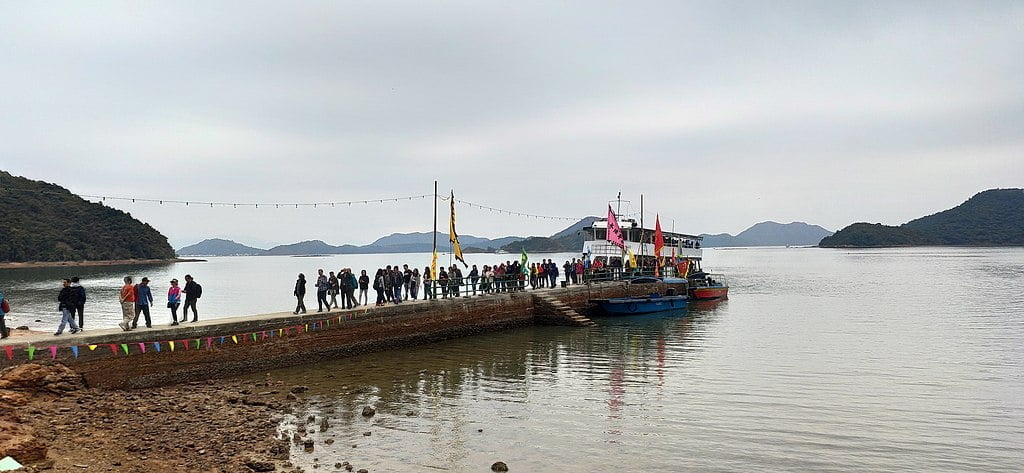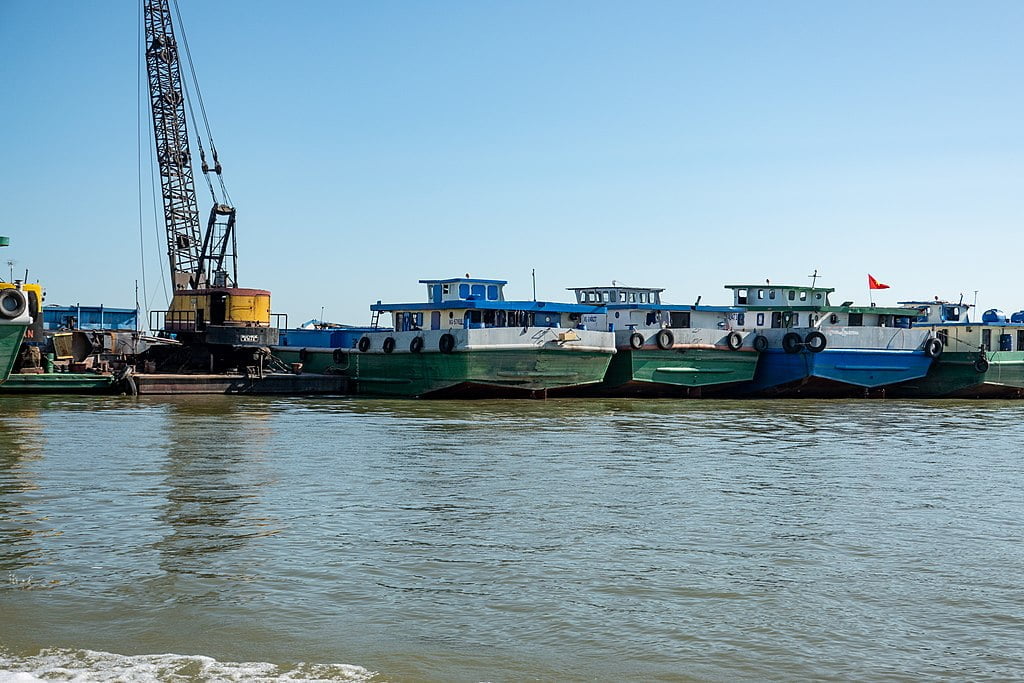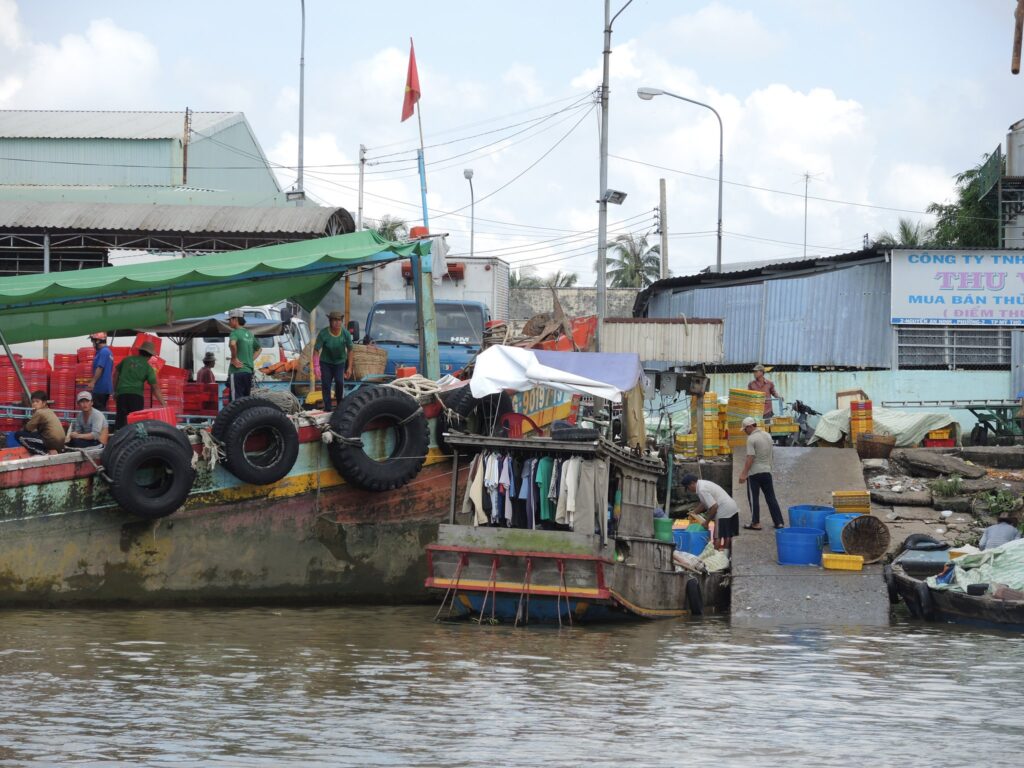After decades of decline, a formerly pristine river with high ecological value in Hong Kong is on the path to revitalisation.
 The Lai Chi Wo Pier, part of the village with a dwindling population. : Nhk9, Wikimedia Commons CC BY 4.0 (https://creativecommons.org/licenses/by-sa/4.0/deed.en)
The Lai Chi Wo Pier, part of the village with a dwindling population. : Nhk9, Wikimedia Commons CC BY 4.0 (https://creativecommons.org/licenses/by-sa/4.0/deed.en)
After decades of decline, a formerly pristine river with high ecological value in Hong Kong is on the path to revitalisation.
Hong Kong’s Lai Chi Wo river is ecologically unique. Stretching 2.6km long, the river boasts 45 different freshwater species, and is home to the most extensive mangrove and seagrass bed in Hong Kong.
But for decades, the Lai Chi Wo river has been getting left behind as its village population dwindles. The river is located in a village of the same name, a valley surrounded by hills on three sides and an estuary on the other. Traditionally, its community relied on subsistence farming, capitalising on the village’s abundant water supply and cultivating growing fields in the catchment areas and terraced fields in the hillsides. But Lai Chi Wo’s luck changed in the 1970s and 1980s as many, mirroring greater demographic trends in Hong Kong, moved to urban areas and abroad, leaving only a few residents behind.
This became problematic for the Lai Chi Wo river. The village’s agricultural production rested upon the river’s management, and keeping the river functioning well was labour-intensive work: previously, farmers were required to actively manage the whole river catchment for irrigation and domestic purposes, villagers actively cleared stream sediments, maintaining stream depth and protecting irrigation structures. With the migration of many villagers, this crucial and labour-intensive desiltation work could no longer continue, reducing the river’s agricultural potential and its capacity to regulate flooding and intense rainstorm events.
A rural revitalisation project centering on Lai Chi Wo was launched by the Centre for Civil Society and Governance (CCSG) of the University of Hong Kong (HKU) in 2013, and received UNESCO recognition in 2020. From traditional subsistence crops, the revitalisation project expanded the village’s economy and produced more economic opportunities for the villagers, while also encouraging the settlement of new community members.
But it has been difficult for the major players around the Lai Chi Wo river to reach consensus on the river’s management. Inhabitants view more intensive dredging and river bank stabilisation as necessary for the success of agricultural revitalisation efforts and to address problems faced during floods and droughts. However, Lai Chi Wo river’s official designation as ecologically significant prohibits desiltation activities. Complicating matters further, the river is located in government land with jurisdiction for the Lai Chi Wo fragmented between different departments bearing responsibility for different sections.
The revitalisation project is tasked with bringing together different groups. To ease tensions, CCSG has asserted itself as a policy broker, facilitating liaison meetings and informal conversations in which locals, experts, green groups and government departments were given opportunities to talk, build trust with one another, and resolve conflicts.
The discussions seem fruitful. Villagers have developed a better understanding of the reasons and requirements behind designating the Lai Chi Wo river as an ecologically important stream with adequate protections, while government departments have better appreciation of traditional practices and local knowledge. Despite the progress, the government departments remain reluctant to take further action regarding river stabilisation due to the low village population, a lack of resources, and its ecologically sensitive location.
But the dialogue has led to some compromises. An informal understanding has been reached among the parties that villagers can undertake occasional desilting using hand tools to alleviate some of the river’s issues. External NGOs and government agencies have helped to run volunteer-based desiltation programmes. However, the conflict between nature conservation and the villagers’ requirement for more intensive desiltation has not been fully resolved.
As part of the brokering, platforms have been created where decisions on maintaining the river and resolving disputes over shared irrigation channels can be discussed, negotiated and agreed upon. Tensions have eased. The community now regularly coordinates collective maintenance, desiltation activities, dredging of farming areas, typhoon preparation, and drought mitigation. Through the new platform initiated by the revitalisation project, the community members’ adaptive capacity and overall community resilience has increased.
Amid a collection of different players, the presence of a neutral third-party focused on linking issues and brokering collaboration has made a difference. The government and the village community are engaging and communicating better, with both sides showing a willingness to come to the table and discuss water issues.
The villagers are eager and proactive in water system maintenance and management. Participatory resource management processes such as these are vital for the success of rural revitalisation as a whole. The early success in the Lai Chi Wo river offers a blueprint to broker river disputes in other communities where cooperation has stalled or conflicts are blocking sustainable governance.
Climate change is one of many major strains on the health of the world’s rivers, alongside intensified urban development. Finding cost-effective interventions to optimise river management will be paramount. Tactfully mediating compromises is a step in the right direction.
Dr. Theresa Marie E. Lorenzo’s research interests lie in collaborative governance and resource management to ensure sustainable development, particularly in developing countries. Her recent research focuses on the governance of commons across the urban-rural spectrum in Hong Kong and its’ neighbouring countries.
Dr Vivian H.Y. Chu’s research interests lie in environmental policy, rural revitalisation and collaborative governance. Vivian’s recent research on cross-sector collaboration is centred on the building of sustainable communities. She also develops sustainability impact assessment frameworks to assess action-based community projects.
Dr. Jessica M. Williams’ research interests lie in environmental policy, collaborative governance and sustainability. Her current focus is on the governance of rural areas and communities, with a focus on sustainability issues.
Dr. Winnie W.Y. Law works with a team of researchers and conducts policy research, action research and knowledge exchange projects on rural revitalization, social innovation, community engagement and corporate sustainability. Dr Law has been a director of the Conservancy Association since 2005 and has served on a number of HKSAR Government’s advisory committees including Advisory Council for the Environment.
The authors declare that they are employed by the University of Hong Kong, who was in charge of and received funding for the Living Water and Community Revitalisation: An Agricultural-led Action, Engagement and Incubation Programme at Lai Chi Wo and the HSBC Rural Sustainability Programme, the study of which this article is based.
The authors declare that research funding has been provided by Hongkong and Shanghai Banking Corporation Limited (HSBC).
Originally published under Creative Commons by 360info™.










